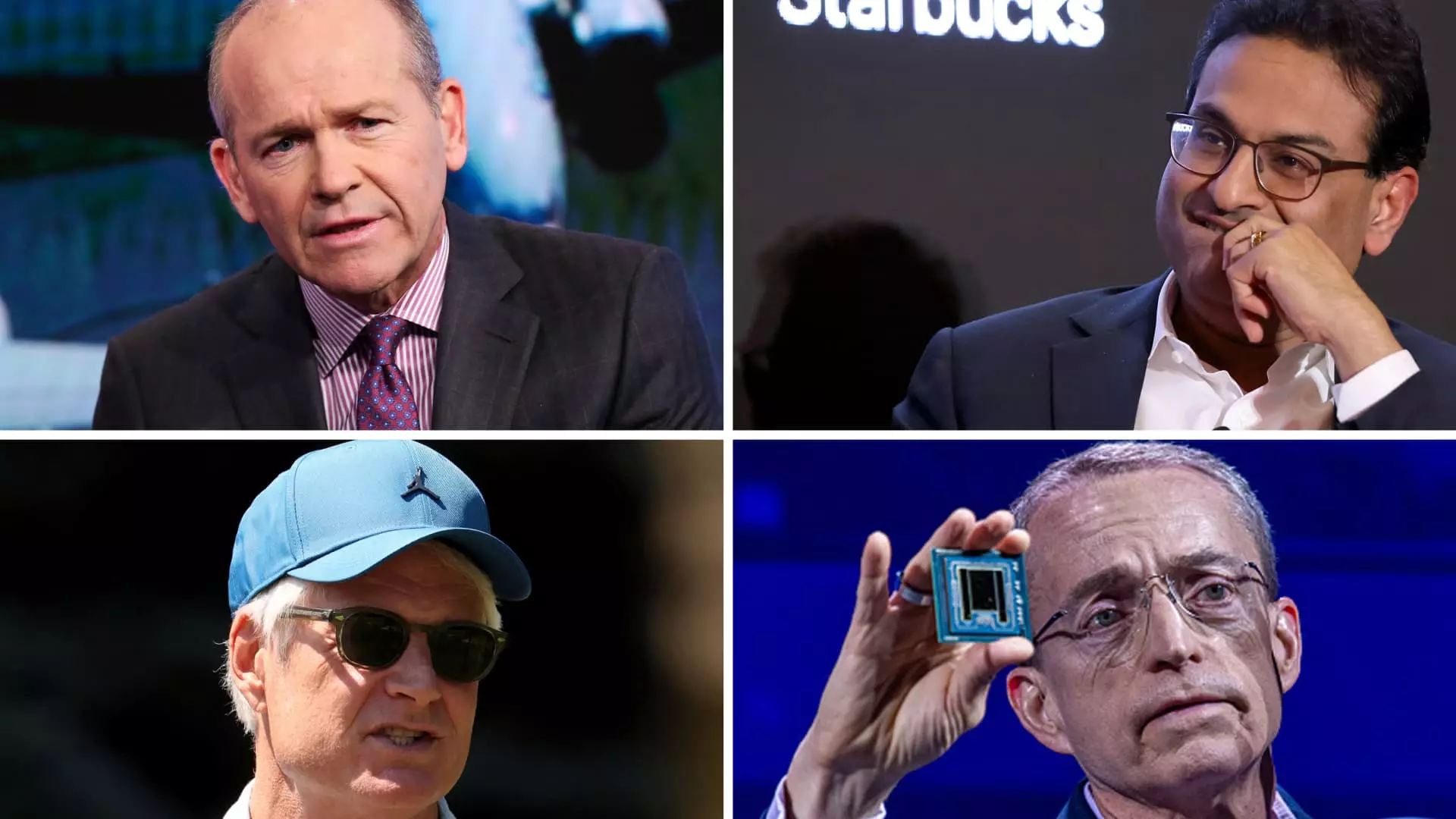In 2023, the business landscape has witnessed an unprecedented wave of chief executive officer (CEO) changes, marking a significant shift in corporate leadership across various industries in the United States. According to Challenger, Gray & Christmas, 327 CEO changes had been reported by November, a figure that surpasses any other year since the firm’s tracking began in 2010. This statistic signifies an 8.6% increase compared to the previous year, highlighting shifting dynamics and mounting pressures within corporate hierarchies. Notably, this turnover trend is evident among some of America’s most renowned companies, including Boeing, Nike, and Starbucks, suggesting a broader reflection of both internal and external challenges that call for fresh leadership.
The recent surge in CEO departures can be attributed to various factors creating an atmosphere of urgency and impatience among stakeholders. Following a period of relative stability during the pandemic, companies are now grappling with a myriad of issues including inflation, labor shortages, fluctuating consumer preferences, and rising borrowing costs. As the economy rebounds, customers and investors alike are placing heightened expectations on corporate performance, leading to a situation where boards of directors are exercising a more aggressive approach to leadership changes.
Clarke Murphy, a leadership advisory expert, emphasizes that when performance is subpar amid an otherwise flourishing market, it becomes glaringly apparent. Companies posting poor results against the backdrop of impressive S&P 500 returns are increasingly under scrutiny. Directors are taking decisive action to replace underperforming executives at a pace that indicates a zero-tolerance approach to stagnation.
Consumer-oriented businesses have been particularly vulnerable to this rate of turnover. The nature of these industries allows for more rapid shifts in consumer sentiment, making them quick to drop underperforming leadership. Unlike sectors such as oil and gas or utilities—where CEO tenures are often more stable—businesses like Starbucks and Chipotle Mexican Grill have demonstrated that management must be agile and responsive to market dynamics. The recent appointment of Chipotle’s former CEO at Starbucks is emblematic of this proactive approach, identified as necessary to rejuvenate consumer interest and market confidence.
A closer examination of specific companies reveals the individual stories behind these leadership changes. Intel, for instance, ousted CEO Pat Gelsinger following a decline in the company’s market performance. Faced with formidable competition from rivals like Nvidia, Intel’s inability to keep pace in the AI chip sector prompted this drastic leadership overhaul. Similarly, Boeing’s leadership transition follows a tumultuous history marked by safety crises and declining public trust. The aerospace giant’s decision to replace CEO Dave Calhoun was influenced by continuing operational challenges and a shake-up aimed at restoring stability.
Starbucks’ move to bring in a new CEO—Brian Niccol, formerly of Chipotle—sparked a positive response from investors as they reacted to hopes for revitalized growth strategies. Niccol’s plans to streamline operations, enhance customer experience, and optimize service stand in stark contrast to Starbucks’ previous management directions. Such shifts highlight how a single executive appointment can energize investor confidence and consumer interest significantly.
Among the companies undergoing transitions, those with unique market challenges illustrate the precarious nature of maintaining growth. Nike’s leadership changes come after a period of declining sales, stemming from strategic decisions that alienated key wholesale partners. Similarly, Peloton’s leadership has faced hurdles transitioning from pandemic-related success to ongoing market viability, with multiple CEOs in recent years reflecting an ongoing struggle to recalibrate their business model. As these examples demonstrate, the pressure to redefine and adapt strategies is relentless, placing immense expectations on new leaders to deliver swift results.
The spate of CEO departures and the subsequent influx of new leadership underscore the evolving corporate landscape in 2023. Companies are experiencing an undeniable transformation, where adaptability and performance are paramount for success. As stakeholders continue to demand excellence, the trend appears set to shape the coming years as organizations reassess their leadership roles and strategies. Ultimately, the capacity for companies to thrive in this dynamic environment will rest on their ability to not only choose the right leaders but also equip them with the resources and vision needed to steer their organizations boldly into the future.


Leave a Reply